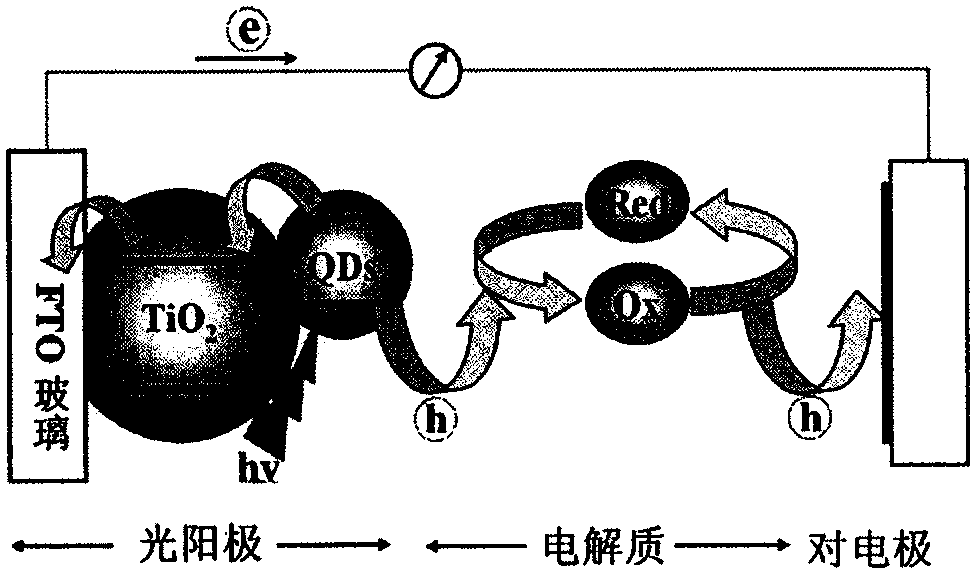Method for preparing photoanode of co-sensitized quantum dot solar cell
A technology of solar cells and photoanodes, applied in photosensitive devices, nanotechnology for materials and surface science, nanotechnology, etc., can solve problems such as limiting the development of QDSC, wide light absorption range, and high electron injection rate
- Summary
- Abstract
- Description
- Claims
- Application Information
AI Technical Summary
Problems solved by technology
Method used
Image
Examples
Embodiment Construction
[0016] The following is a detailed explanation of the content of the invention, and the specific implementation is not limited to the invention.
[0017] 1. Preparation of water-soluble Zn-Cu-In-Se (ZCISe) quantum dots
[0018] 1) Preparation of oil-soluble ZCISe quantum dots
[0019] Selenium powder (24.0 mg) was dissolved in a mixture of diphenylphosphine (0.3 mL) and oleylamine (0.5 mL) to obtain a Se source. Dissolve 110 mg of zinc acetate dihydrate in a mixed solution of oleylamine (1 mL) and octadecene (4 mL) at 130° C. in a nitrogen atmosphere to obtain a Zn source. Take cuprous iodide (19.0mg), indium acetate (29.0mg), Zn source (0.4mL), oleylamine (2.0mL) and octadecene (1.5mL) in a 50mL three-necked flask, heat up to 90°C, and use a vacuum pump to Pump until no bubbles come out, then fill the reaction vessel with nitrogen, and raise the temperature of the reaction solution to 180°C. When the reaction temperature reaches 180°C, quickly inject Se source (0.8mL), rem...
PUM
 Login to View More
Login to View More Abstract
Description
Claims
Application Information
 Login to View More
Login to View More - R&D
- Intellectual Property
- Life Sciences
- Materials
- Tech Scout
- Unparalleled Data Quality
- Higher Quality Content
- 60% Fewer Hallucinations
Browse by: Latest US Patents, China's latest patents, Technical Efficacy Thesaurus, Application Domain, Technology Topic, Popular Technical Reports.
© 2025 PatSnap. All rights reserved.Legal|Privacy policy|Modern Slavery Act Transparency Statement|Sitemap|About US| Contact US: help@patsnap.com



